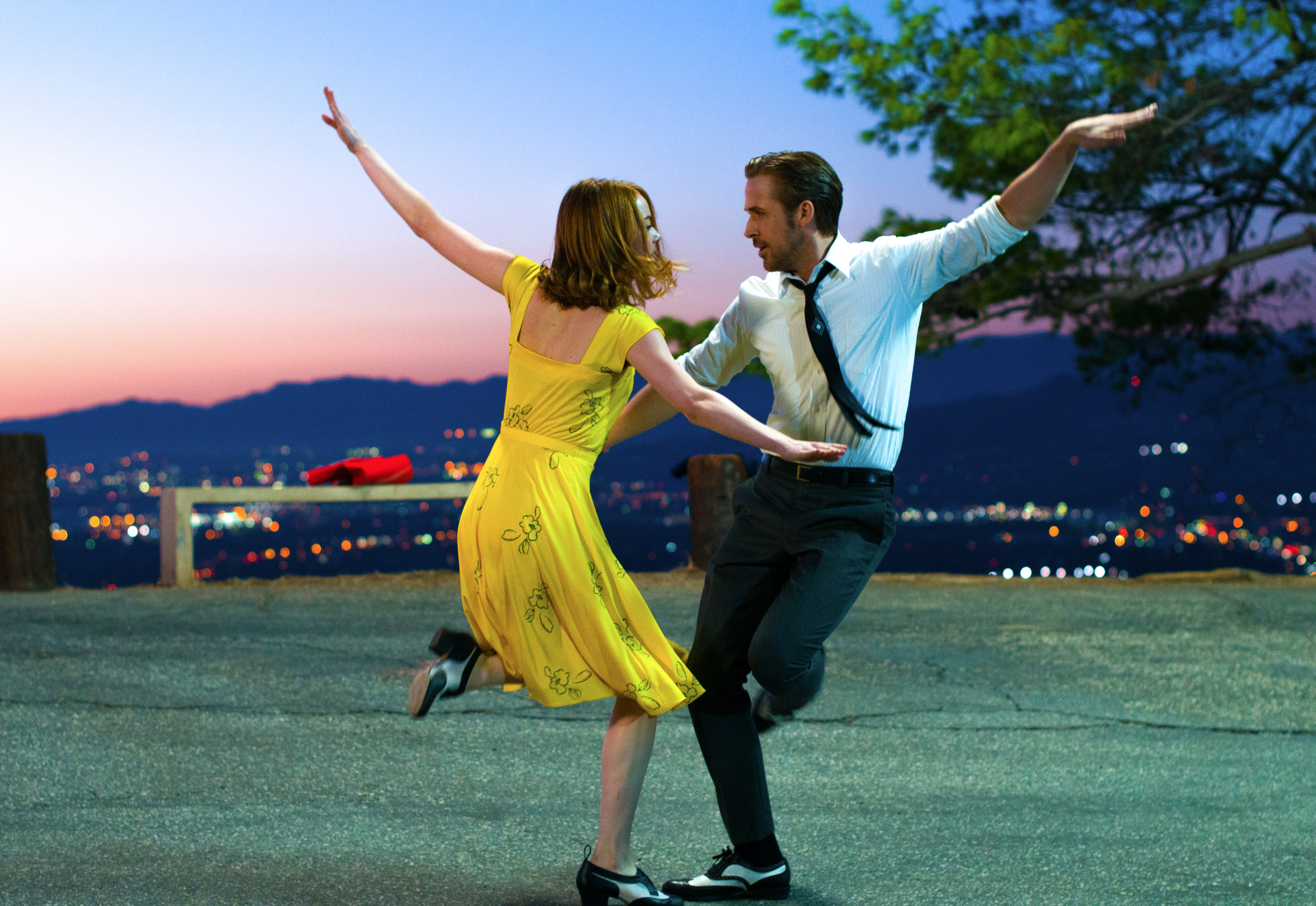As controversy abounds surrounding La La Land‘s record-breaking 14 Oscar nominations, In The Middle discusses whether the film really is worth the hype…
This year’s Oscar nominations are in and it’s official – everyone is gaga for La La Land. Hollywood has a habit of naval-gazing, which means the film’s story of a struggling actress and multiple classic Hollywood references boosts its chances of netting best picture. You might wonder if perhaps it would be better deserved by something more hard-hitting, like Hidden Figures, Moonlight or Manchester by The Sea, and perhaps you’d be justified. But allow me to fight La La Land’s corner first.
We’re so used to seeing movies which have something serious to say about society, every frame drained of colour like a low saturation Instagram filter, in an attempt to mimic real life. La La Land revels in bright block primary colours, a nod to the technicolour classics it riffs on, but also providing a bright splash of contrast amongst the drudgery of ‘everyday life’. Even when the film dips into painful realism, the cinematography adds an enjoyable glamour to the screen, keeping up the haze of romance.
As with the colour palette, La La Land wears its influences on its sleeve. If you’re into your films, you might catch 1964’s French musical Umbrellas of Cherbourg in the bright spots of colour, the change of season calling cards, and in the bittersweet ending. There are almost frame to frame match-ups to Singin’ In The Rain and An American In Paris – watch out especially in the epilogue – as well as straight up references to the classic romance Casablanca and screwball-comedy Bringing Up Baby. Hollywood’s fascination with film noir gets a look-in with 1946’s The Killers (catch the poster in Mia’s apartment) and watching over Mia’s bed is a huge poster of It Girl and three time Oscar winner Ingrid Bergman.
‘All the classic movies alluded to were either made in the inter-war years, or in the years after WW2. The real world then certainly wasn’t picture-perfect, but the explosion of Hollywood and the many stars it created provided escapism’
All the classic movies alluded to were either made in the inter-war years, or in the years after WW2. The real world then certainly wasn’t picture-perfect, but the explosion of Hollywood and the many stars it created provided escapism. Screw-ball comedies and musicals to make you laugh; grand stories about the endurance of love; thrillers about spies, and jewellery thieves. All were designed to boost public morale in these years of hardship and uncertainty. It’s no surprise then, considering our current political climate, that Chazelle is dragging the classic Hollywood musical romance back to the twenty-first century. It’s hard not to think now is about the time we could all do with a little escapism. Chazelle seems to have taken Trump’s rallying cry ‘Make America Great Again’ to heart, but instead of sending us back fifty years in terms of civil rights, Chazelle’s dropped us off at a period in history where the glitz and glamour and just plain fun of Hollywood were the greatest thing America had to offer. In reality America wasn’t great then and nor is it now, but the point is that we can pretend on film, perhaps the only outlet left for us to do so.
‘Chazelle seems to have taken Trump’s rallying cry ‘Make America Great Again’ to heart, but instead of sending us back fifty years in terms of civil rights, Chazelle’s dropped us off at a period in history where the glitz and glamour and just plain fun of Hollywood were the greatest thing America had to offer’
But Chazelle isn’t trying to put stars in our eyes entirely. He gives us Gosling and Stone and makes them mimic Fred Astaire and Ginger Rogers, but their movements are a little stiff and too simple. Chazelle is quoted as saying Gosling and Stone are perhaps our nearest thing to the old power couple, but they’re a purposefully poor imitation of it. Seb and Mia aren’t yet stars, and this is all reflected in the wistful mumbling song numbers and the rough dance steps. The sweeping romance is still there too, but it’s a little sour. The film’s resolution is quiet, rather than the final heady whirl of the old classics.
Mia and Seb’s dreams are achieved through sacrifice and hard work, and yet they still don’t quite live up to expectation – but such is life. La La Land touches on so many of these important lessons – art vs commerciality, hope in the face of failure, and what success really looks like. In both Mia’s acting and Seb’s music we learn art needs passion but also ambition. Mia and Seb can’t coast along in their nostalgia forever, and nor does the film.
That’s not to say the film isn’t without faults. To have Seb, a white man, portrayed as jazz’s apparent last foot-soldier, can make you wince if you think too hard about it. But the film doesn’t entirely condemn John Legend’s Keith either, who’s willing to do what Seb isn’t and bring jazz to a wider audience. I’ve heard that people were disappointed in the ending too, and maybe they’ve got a point – surely artistic success and lasting relationships aren’t completely incompatible? But, on a lighter note, if we take the high rates of celebrity divorce into account, maybe there’s hope for Mia and Seb. La La Land 2 anyone? I’m in.
Heather Nash
(Image courtesy of AMC)

